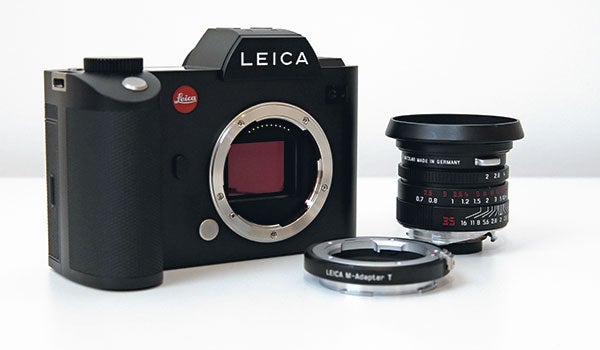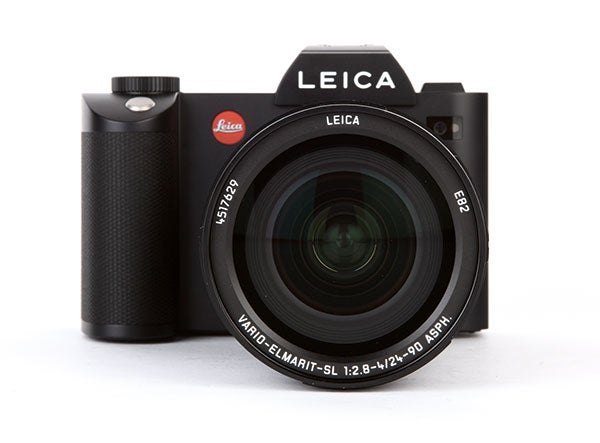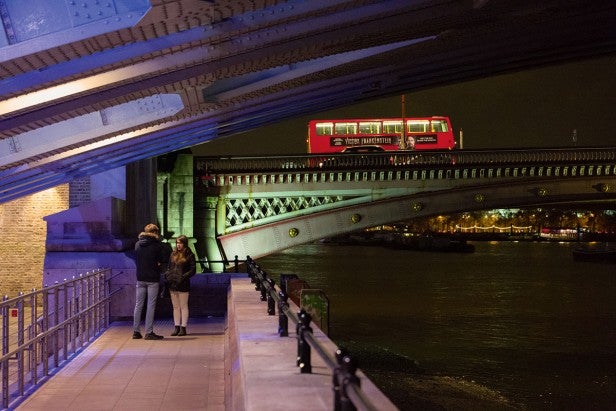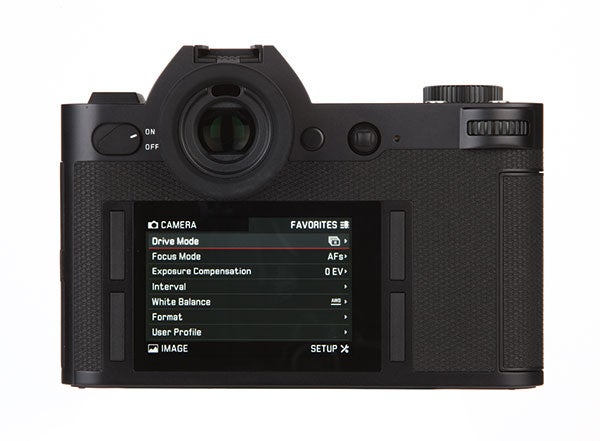Leica SL (Typ 601) Review
Leica SL (Typ 601)
Leica’s top-end CSC has some outstanding features

Sections
- Page 1 Leica SL (Typ 601) Review
- Page 2 Build, Handling and Performance Review
- Page 3 Image Quality and Verdict Review
Verdict
Pros
- Extraordinary electronic viewfinder
- Excellent image quality
- Internal 4K video recording
Cons
- Large, heavy body
- Unintuitive controls
- Limited native lens
Key Specifications
- Review Price: £5050.00
- 24-million-pixel full-frame CMOS sensor
- ISO 50-50,000
- 4.4-million-dot ‘EyeRes’ EVF
- Leica L mount
- 11fps continuous shooting
- 4K video at 30fps
What is the Leica SL (Typ 601)?
There’s something about Leica that makes many photographers go slightly weak at the knees. It’s a name that’s indelibly associated with some of the greatest photographers of all time, including the likes of Annie Leibovitz, Robert Frank, and Henri Cartier-Bresson. The company’s most iconic product line, its M-series rangefinders, is more than 60 years old, and took the seismic transition from film to digital in its stride while barely changing in design. Indeed, the current Leica M-P looks more or less the same as the 1954 M-3, while the Leica M-A is just about the last ‘serious’ 35mm film camera still available.
With all this nostalgia as a distraction, it can be easy to overlook another side of Leica that’s emerged in recent years – that of a company aiming to provide unique tools for professional photographers (or perhaps ambitious enthusiasts with very accommodating bank managers). First were the S-series medium-format DSLRs, based around a 45x30mm Pro Format sensor, and now the company’s SL (Typ 601) full-frame compact system camera.
Leica is only the second company to bring out a mirrorless model with a full-frame sensor, after Sony’s groundbreaking Alpha 7 series, although logic dictates that it certainly won’t be the last. The SL stretches the word ‘compact’ in the CSC acronym to breaking point, being as large and as heavy as the average full-frame DSLR. But it’s also a heavyweight in terms of features, being blessed with 11 frames per second continuous shooting, internal 4K video recording and an extraordinary 4.4-million-dot electronic viewfinder, which is easily the best we’ve yet seen on a stills camera.
All this cutting-edge technology might seem alien for Leica, and we rather suspect that the company has spent a lot of time recently picking the brains of its long-time collaborator Panasonic. But no matter where all this know-how comes from, one thing is clear – the SL is a serious proposition. Let’s take a closer look at what it offers.

Leica SL (Typ 601) – Features
Usually the first thing we examine with any camera is the sensor, and Leica has opted for a 24-million-pixel full-frame CMOS unit. This does without an optical low-pass filter to maximise acuity, but clearly the SL is still some way behind the latest high-resolution models such as the 50.6MP Canon EOS 5DS R, 42.4MP Sony Alpha 7R II or 36MP Nikon D810. However, Leica is keen to stress that pixel count isn’t the be-all and end-all of image quality, and that the excellence of its lenses should at least partially close the gap. It’s also probably worth pointing out that 24MP is easily sufficient to give highly detailed 24x16in/A2 prints, although higher pixel counts do offer more scope for cropping.
Paired with Leica’s Maestro II image processor, the sensor delivers a standard sensitivity range of ISO 50-50,000. Raw files are recorded as 14-bit DNGs for maximal tonal gradation and easy processing. Continuous shooting is available at a hugely impressive 11 frames per second, with focus and exposure fixed at the start of the burst, dropping to 7fps with live view, autofocus and autoexposure adjustment between frames. Buffering is very respectable, with up to 30 raw frames or 70 JPEGs recordable before the camera starts to slow down.
The sensor sits behind the L-mount, which is physically the same as that used in the Leica T. It’s an all-electronic, four-pronged bayonet, which Leica says was designed with full frame in mind from the start. It’s noticeably larger in diameter than the Sony E-mount used by the Alpha 7 series, giving more space around the full-frame sensor, especially at its corners.
Timed shutter speeds range from 60secs-1/8000sec, with up to 30 minutes available in bulb mode, and a very respectable flash sync of 1/250sec. The shutter is pretty quiet, and the combination of 1/8000sec shutter and ISO 50 allows for shooting at large apertures in bright light. Dual SD card slots are used for storage, and the camera can either record files in duplicate to both cards simultaneously, or switch to using the second when the first is full. Unusually, one slot accepts UHS-II cards, which have a second set of pins for dramatically faster write speeds. This is worth knowing as it can take nearly 90secs to write a full burst of raw files to a conventional SDHC card. This image was shot at ISO 10,000 and still shows an impressive control of noise
This image was shot at ISO 10,000 and still shows an impressive control of noise
Leica has included an intelligent Auto ISO function that allows you either to set a fixed minimum shutter speed, or specify that this should adjust to match the focal length of the lens in use. Auto ISO can also be used in manual-exposure mode, allowing you to choose the shutter speed and aperture to suit the subject and let the camera adjust the ISO to compensate for changing light; this can be combined with exposure compensation to adjust the image brightness. One neat touch is Floating ISO, where the camera will adjust the ISO purely to compensate for any change in maximum aperture on zooming the lens when shooting wide open.
Aside from the basics, though, the SL has few additional options. There are programmable intervalometer and autobracketing modes, with the latter including the ability to make a high dynamic range JPEG file in-camera. But there’s no space for such fripperies as art filters, panoramic shooting or a multiple-exposure mode. With this in mind, it may come as a surprise to find both Wi-Fi and GPS built in, but Leica considers both to be genuinely useful tools for serious photographers – and I agree.
Where the SL gets particularly interesting, though, is with regards to video recording; it can record 4K video at 30fps using a Super-35 crop of the sensor. As this is a similar area to APS-C, it will work with lenses designed for the Leica T, allowing true wideangle shooting. The camera allows 4K footage to be recorded internally to SD cards in 4:2:0 8-bit mode, or to an external recorder over HDMI in 4:2:2 10-bit mode. Alternatively, full HD video can be recorded at up to 120fps. A dedicated live view mode shows a 16:9 cropped view, with optional focus peaking and zebra-pattern overexposure-warning displays. Slightly disappointingly, though, microphone or headphone sockets can only be added via an adapter that plugs into the camera’s proprietary multi-connector socket.
Leica SL (Typ 601) – Viewfinder and screen

If there’s one thing Leica really has got absolutely right with the SL, it’s the viewfinder. Its 4.4-million-dot EyeRes finder gives exceptional detail, and a larger view than the optical finders on even top-of-the-range full-frame DSLRs. Its 60fps refresh rate means there’s barely any lag, either. In addition to this, it can display a wide range of exposure information, overlay your choice of gridlines and even display electronic levels. The net result isn’t just the most impressive electronic viewfinder yet, but it’s probably the finest viewfinder on any full-frame camera to date, surpassing even the best optical finders such as that on the Canon EOS 5DS R.
The EVF is backed up by a 3in, 1.04-million-dot rear screen that also gives a bright, detailed view. It’s touch-sensitive, which means it can be used to select the focus point and change certain settings, including ISO and exposure compensation. An eye sensor allows the camera to switch seamlessly between the two viewing methods during shooting. It’s just a pity that the LCD isn’t articulated in any way, which is a disadvantage compared to the tilting screen on the Sony Alpha 7R II.

